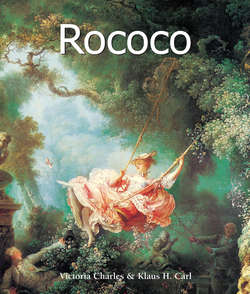Читать книгу Rococo - Victoria Charles - Страница 15
I. Rococo in France
Successors
ОглавлениеA bourgeois trait emerged in the French art sphere, with the help of two other painters, Jean-Siméon Chardin (1699–1779) and Jean-Baptiste Greuze (1725–1805). Chardin was one of the most important colourists of the 18th century. Originally a still life painter, he had then extended his work to the depiction of objects from daily life, as in Cook Cleaning Turnips (1738). These pictures show the plain unvarnished reality from which he knew how to find the artistic charm, without regard for particularly intensified intellectual or spiritual profundity in the pictures. In 1728, the Royal Academy accepted two of his new still life works from this year: The Skate and The Buffet. This gave him accreditation and membership, allowing him to receive royal commissions. Chardin revealed in oils the hidden poetry and intimacy that lingers behind objects of daily life in addition to capturing their splendour and subtleties. He did not seek his models amongst the rural population, but painted the domestic life of the citizens of Paris. Some of his best works were The Washerwoman (1735), Saying Grace and Morning Toilette.
Chardin, who was greatly impressed by his study of Dutch painting, attempted to apply this style to his pictures of flowers and kitchen scenes, which surpassed many of his works of idols, in terms both of subject and emotional content. Diderot called him the “Great Magician”. Despite his successful art career, Chardin experienced much misfortune in his private life. Family strife and deteriorating eyesight gave him much to contend with. His finances disappeared and he himself faded almost into oblivion until the brothers Edmund (1822–1897) and Jules de Goncourt (1830–1870) rediscovered him around the 19th century and celebrated his work.
Maurice-Quentin Delatour, Maurice de Saxe, Marshal General of France, 1750–1760.
Pastel on blue paper, 60.8 × 24.4 cm.
Musée du Louvre, Paris.
Jean-Baptiste Greuze (1725–1805) was one of the most significant artists of the French school in the 18th century. His unique style and sentimental, melodramatic genre pictures distinguished him from all the others; he created his own, uniquely personal style. Although his piece for entry to the Academy in 1769 was rejected, the critics, even at an early stage in his career, showered him with praise, most of all Diderot, who claimed to have discovered in him “morality in the form of art”. His L’Accordee du Village (1713, The Village Bride), in which every detail had the effect of an actor playing his role, seemed to emerge from a “comedie-larmoyante” (sentimental domestic drama) or a contemporary drama. Many of his later works were delightful pictures of young girls.
Greuze placed the emphasis very particularly on the sensitive, even if it then, as in The Broken Jug (1785), occasionally crossed the line into the melodramatic. In the representation of faces and half-figures of pretty children and girls, sometimes looking rather lost in thought but also fitting the taste of the upper classes, he made certain admissions, whereby he created a style of painting which has outlived all the revolutionary upheavals. These works include the Portrait of a Young Peasant Girl and Portrait of a Young Girl (both c. 1770–1780). With the end of the century, his career, too, came to an end. A new style and a new star were discovered: neoclassicism and Jacques-Louis David (1748–1825).
In the year 1720, the highly productive Venetian Rosalba Carriera (1675–1757), who worked mainly at the courts in Vienna, Modena and Versailles, visited Paris. She had a reputation across Europe as an outstanding pastel artist; in Paris, although she did not stay very long, she stirred up a veritable storm of enthusiasm with her art, which includes amongst many others the Portrait of a Boy in the Leblond Family.
Конец ознакомительного фрагмента. Купить книгу
